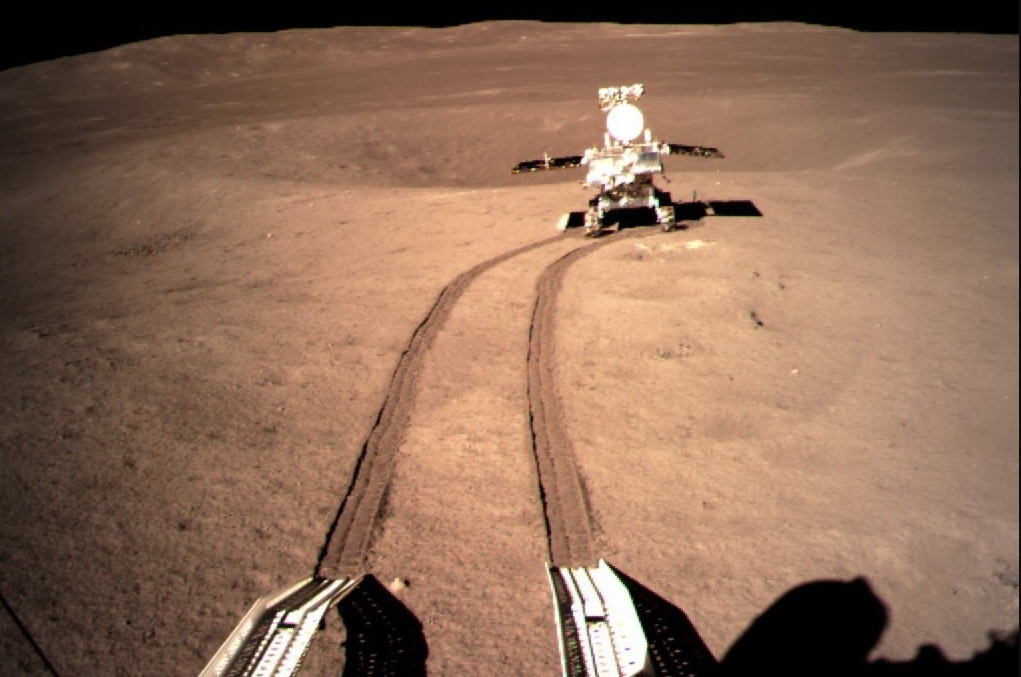Weiren Wu, the Chief Designer of the Chinese Lunar Exploration Program (CLEP), recently announced an ambitious plan to put Chinese footprints on the lunar surface by 2030. This announcement came just prior to this year’s Space Day of China, an annual event celebrated on April 24th meant to showcase the space industry achievements of the China National Space Administration (CNSA).
“By 2030, the Chinese people will definitely be able to set foot on the moon. That’s not a problem,” Wu said in an interview with China Media Group (CMG). This most recent announcement comes less than a year after CLEP was given state permission by China to begin Phase-4 of CLEP, whose program structure consists of four phases of robotic lunar exploration, with the first three phases having achieved a flawless success rate.
Phase 1 consisted of two missions, the first of which, the Chang’e-1 lunar orbiter, was the first Chinese lunar mission and was launched in October 2007. After a successful mission it intentionally crashed into the Moon in March 2009. The second mission was the Chang’e-2 lunar orbiter that was launched in October 2010, and after a successful primary mission in lunar orbit the mission was extended to explore the asteroid, 4179 Toutatis, which it successfully conducted in December 2012. Contact with the spacecraft was lost in 2014.
Phase 2 consisted of three missions, the first of which was combination lunar lander and rover, Chang’e-3, that launched in December 2013 and is currently active. The second mission was Queqiao-1, which was launched in May 2018 to serve as a relay satellite sent to the Earth-Moon L2 Lagrange Point for communications relay with Chang’e-4, which was launched in December 2018 and was a combination lunar lander and rover, the latter of which was dubbed Yutu-2. This also marked the first soft landing on the far side of the Moon in history.

Phase 3 consisted of two missions, the first the experimental test flight, Chang’e-5 T1, which was launched in October 2014 and was designed to test the various rendezvous and capsule technologies that would be required for a lunar sample return mission, which was accomplished with Chang’e-5 in late 2020 as it successfully returned 1731 grams of lunar regolith to the Earth.
Phase 4 will consist of four missions, the first of which will be the Queqiao-2 relay satellite that is scheduled to be launched in 2024 and will act in the same manner as its predecessor for remaining Phase 4 lunar missions, Chang’e-6, -7, and -8, which are scheduled to be launched in May 2024, 2026, and 2028, respectively.
“There’s a relay satellite up there, whose main function is to solve the communication problem between the Earth and them, and also support Chang’e-7 and Chang’e-8, as they will land in different locations,” said Wu.
Wu also discussed how Chang’e-6, slated to be another lunar sample return mission, will be both collecting and returning lunar samples from the far side of the Moon in 2024. He notes this will be the first time in history that lunar samples from the far side of the Moon will be returned to Earth. The Chang’e-7 mission will travel to the south pole of the Moon with the primary objective of searching for hints of water that might be located there.
“We hope to find water there. If water is ever found, it would be great news for human survival on the moon,” said Wu.
In the final mission of Phase Four, Chang’e-8 will work in conjunction with Chang’e-7 to establish the framework for constructing a future lunar research station near the lunar south pole which will be used to better understand in situ resource utilization, also known as ISRU, on the Moon.
Wu also unveiled China’s ambitious goal of establishing a Moon-centered deep space internet to assist in future lunar missions, as well.
“We are building a satellite constellation around the moon, a system that can provide communication, navigation, and remote sensing services. After that, we can carry out future deep space exploration,” said Wu.
While the CNSA has already established a well-executed lunar exploration program along with a blueprint for the coming years, Wu discussed establishing an international lunar research station, also called ILRS, with the goal of completing the outpost’s basic structure by 2030, and he emphasized that China is open to inviting international scientists and partners to take part in the project.

“The international lunar research station built by China is open (to international partners),” Wu said. “We welcome the participation of developed countries such as the United States and European countries. We also hope that BRICS countries and some underdeveloped African countries will join us. We have put forward an initiative for all to sign contracts, deals or strategic agreements of intent.”
Along with making incredible strides in lunar exploration, China also has an active space station, Tiangong, which is a three-module platform in low Earth orbit, with the third and most recent module, Mengtian, having been launched in October 2022. The Chinese Survey Space Telescope, also known as Xuntian, is currently scheduled to launch in 2024 and will be co-orbiting with Tiangong.
As always, keep doing science & keep looking up!

